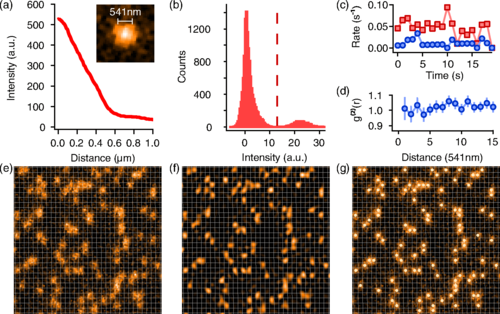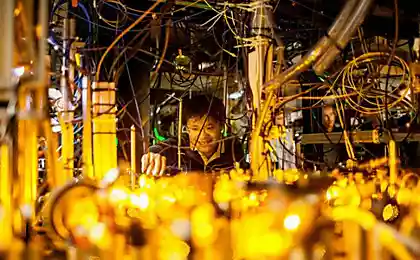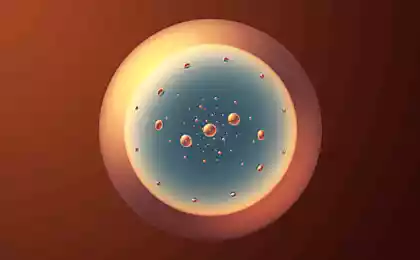766
Physicists have built the world's first microscope fermion

Student-physicist Lawrence Cheyuk, one of the authors, adjusts the laser optics / SciTech Daily i>
Physicist at the Massachusetts Institute of Technology (MIT) built the world's first microscope fermion . Cooled in an experiment using two lasers with different wavelengths atoms potassium 40 sup> K moving to more and more low energy levels. This fermions emit photons, which are captured and give a microscope image.
All we know of matter is composed of bosons and фермионов. Fermions form matter - it is the quarks that make up protons and neutrons, which in themselves are fermions and leptons (electrons, muons, tau leptons, neutrinos). Bosons - it is the interaction of carriers (photons, gluons, W and Z-bosons, and the same Higgs boson).
The Harvard scientists were able to construct a boson microscope in 2009, and in 2010 they repeated the work of the Institute for Quantum Optics. Max Planck. But seen through a microscope fermions hitherto failed. Meshal принцип Pauli , according to which in a closed quantum system of two or more identical fermions (particles with half-integer spin) can not both be in the same quantum state. Because attempts to cool the cloud of fermions led to the fact that they were built at different energy levels, and has the highest energy particles are cooled further was impossible.

In this paper, опубликованной In May 2015 , a team of researchers talks about his achievement. Tsvirlyayn Martin, one of the team members, describes the experiment: "We wanted to achieve the same thing that the previous group could do with bosons. But it turned out that with fermions is harder to do - they are not so easy to chill ».
Using two lasers, the scientists created a cellular network in cells which, as in "energy holes" were caught and held fermions. The gradual cooling resulted in the fact that the fermion gas reached a temperature close to absolute zero, and individual fermions could be retained in the cells of the network. The emitted photons are thus caught by the microscope.
"It means that I know where there are fermions, and they can, relatively speaking, a pair of tweezers to move anywhere, and to make them any pattern" - says Tsvirlyayn. Due to being in isolated cells, fermions do not interact with each other and the Pauli principle does not prevent them how to cool.
As explained by researchers, their work may help in further advancing towards the creation of high-temperature superconductors, such as the microscope can advance to the next level study of electrons, which are fermions, too. In addition, the ability to hold and move individual fermions is directly related to technology for the creation of quantum computers.
Source: geektimes.ru/post/251390/
In graphene - the stars: from graphene oxide material is moving under the influence of light
Just complete fox























